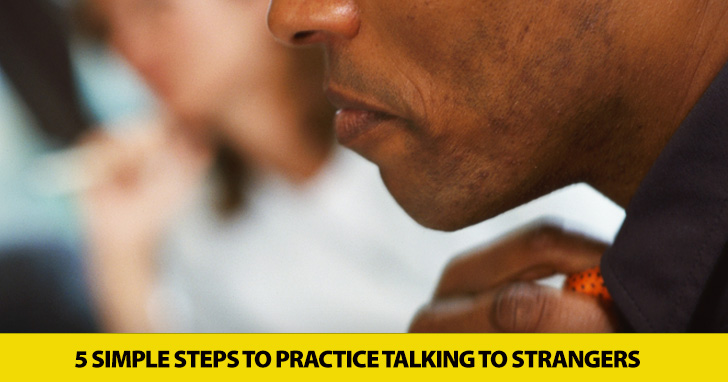Be Bold & Talk: 5 Simple Strategies to Practice Talking to Strangers


But when you have to have a tough conversation, tell someone something you don’t want to have to say, be the bearer of bad news (think along the lines of “we need to talk”) …things are tricky no matter what language you are speaking. ESL students can be intimidated by their lack of language fluency which can make them hesitant to say tough things. With the following tips and tools, your students can be more confident in saying the things they need to say even if they don’t want to say them. Here are nine tips for success in a not so easy conversation.
It is so easy to minimize one’s feelings or downplay a negative situation. But when your students need to have a tough conversation with someone, they need to be honest. This can be especially difficult for ESL students whose home cultures value saving face over brutal honesty or students who are nonconfrontational by nature. Suggest this middle road that Dr. Phil advises. You don’t have to say everything, but make sure that what you are saying is true. In other words, you don’t’ have to go into all the ugly details, but make sure the things you are saying are truthful.
It doesn’t do much good to tell someone they make you feel bad and leave things there. Without specifics about what exactly caused the negative feelings, a person cannot do much to act differently next time. That’s why it’s helpful to be specific. Encourage your students to pinpoint problematic behaviors or words as closely as possible, and their tough talks will likely be more productive. It’s especially important to make sure emotions don’t obscure meaning in a tough conversation, so make sure your students are able to distinguish feelings from fact before they approach someone for a tough talk.
Not everyone will react to certain words the same way. That’s why it’s important your students think about who they will be talking to and how that person might interpret what they will say before approaching them for the conversation. Some people are less reactive and take offense less easily. Those people might be easier to talk to than their opposites, or at least require less specific planning for what you will say when you talk to them. Culture also comes into play if they are talking to internationals, so encourage your students to think about the cultural norms for the person they will be approaching.
What is the point of your students’ conversation? Do they just want to raise their partner’s awareness of a certain issue? Do they want that person to stop acting a certain way or saying something? Are they arguing for an apology? Knowing what you expect of a tough conversation is key for success, so encourage your students to think about what they want from a conversation before they have. That way they can communicate with the other person with that goal in mind, and they will be sure when they have achieved what they set out to do.
Talking with someone and talking at someone are very different things. To make sure tough conversations are productive, encourage your students to ask for feedback and clarification when they talk with someone. You might take a few minutes to teach them how to get feedback appropriately such as using phrases like Do you see where I am coming from? Can you understand what I am saying? Am I making sense to you? When your students are sure their partner has heard and understood them, they will be able to approach a solution together and both walk away from the conversation feeling good about their talk.
I can give opinions from sun up to sun down, but without factual support, those opinions probably won’t mean anything to the person I am talking to. People believe facts not feelings or opinions, so help your students think about the difference and then be clear with themselves about the facts of the situation. That way they will be able to share those same facts with the other person to make their opinions have more value.
Sometimes we choose to express our sentiments with soft words or indirect language in hopes of softening the blow. It didn’t take long into my marriage for me to figure out what I thought was being kind was actually obscuring what I was trying to say. My newlywed husband just wasn’t getting it. That’s not a flaw in his character. It was a flaw in the words I was choosing. Sometimes we think we are using softer expressions or being indirect in what we say to make things easier, but we aren’t. We are just complicating the situation. To prepare your students for successful conversations about unpleasant topics, help them understand the difference between strong and weak words and direct and indirect language, always choosing the former. And help them understand that this is not acceptable in all cultures, so it’s okay if direct words make them comfortable. They are still the best choice when it comes to tough conversations in English, and it’s not wrong for them to express themselves that way.
Tough conversations aren’t productive when one person does all the talking or when things get so heated one person is talking over the other. Point out to your students that they will need to listen to what their partner is saying and they should respond to what they hear. We can be tempted in a heated discussion to react – say the first thing that comes to mind or what our emotions tell us to say – rather than respond – think about what we want to say and express ourselves without letting our emotions take control of us. The respectful thing is to listen to the other person, hear what they are saying, think about what you want to say, and then say it calmly and clearly.
That is until the other person understands what you are saying. If your students have their goal clear in their mind before the conversation, they will know when they have achieved that goal. And they should. Not giving up or giving in is essential to tough conversations also being productive ones.